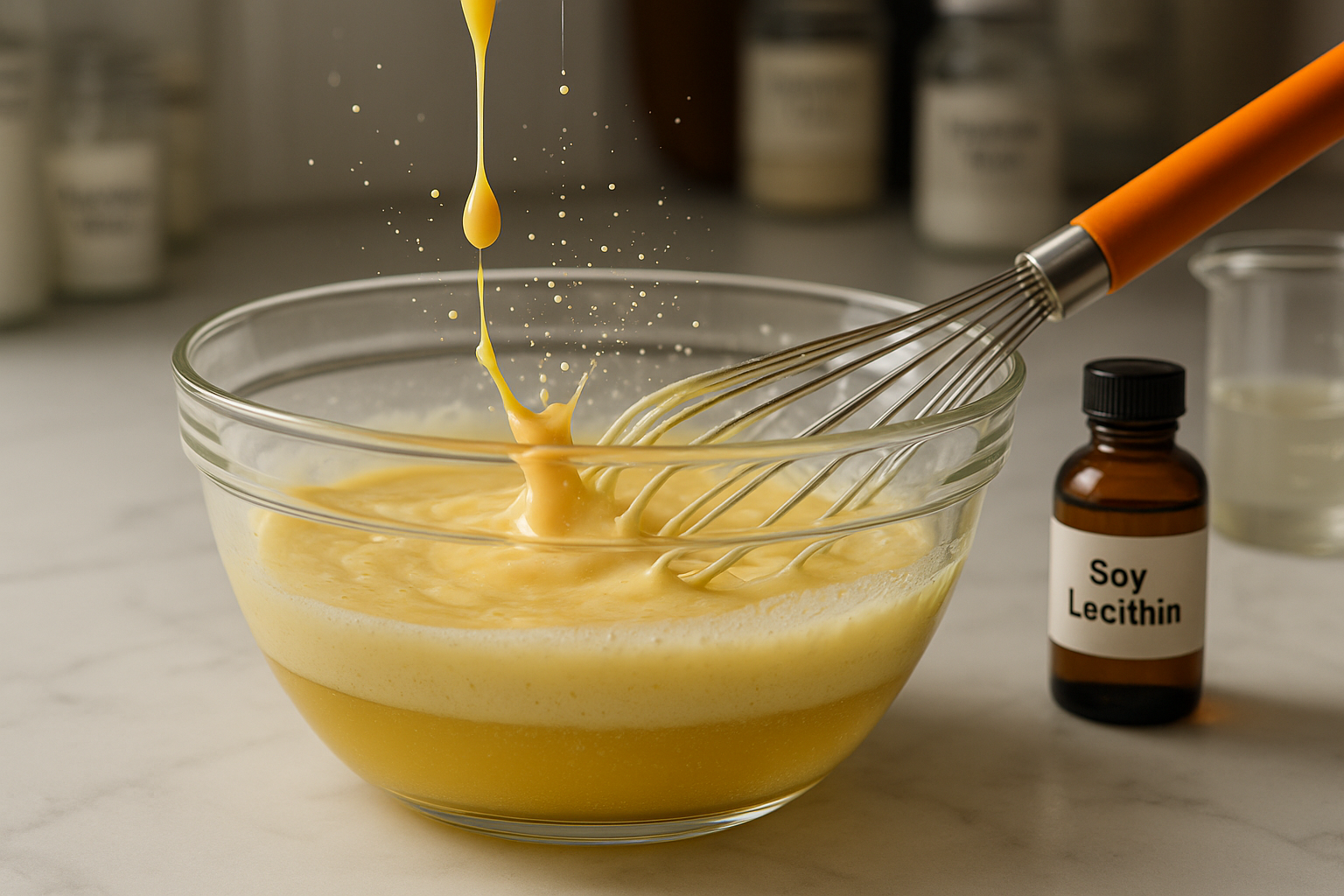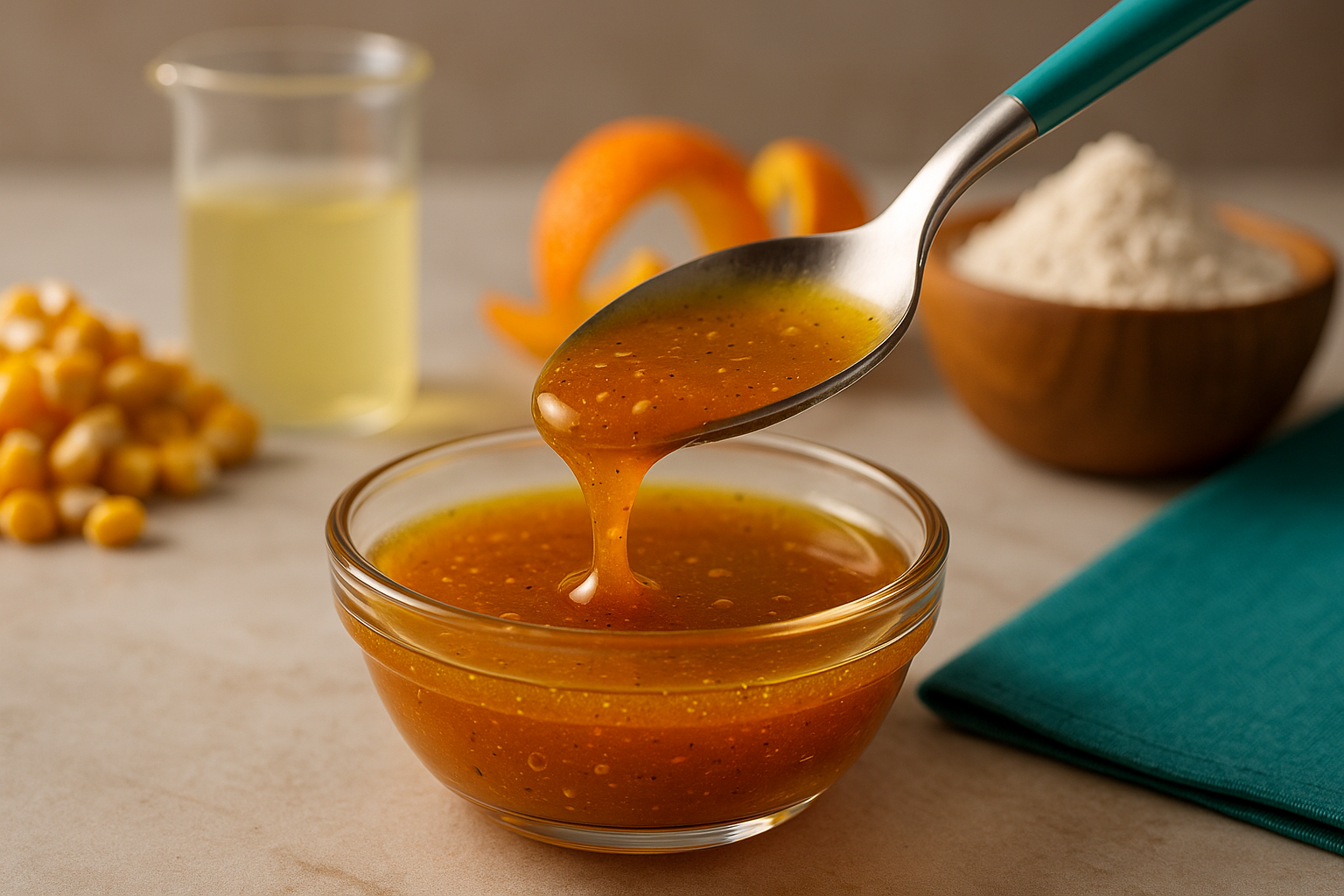
Food Thickeners: Types, Uses, and Benefits
SUBSCRIBE TO OUR BLOG
Promotions, new products, and recipes.
Food Thickeners: Types, Uses, and Benefits
Food thickeners are essential components in the culinary and food processing industries, offering a versatile solution to achieve desired consistency and improve the texture of various food products. From salad dressings to ice cream, these ingredients play a crucial role in enhancing the overall mouthfeel and stability of both liquid and solid dishes. They are widely used in food science to refine recipes and ensure the quality of food products.
Derived from natural sources like chia seeds and red algae or engineered for specific food applications, food thickening agents are indispensable in modern food preparation. Whether you're creating gluten-free baked goods or managing swallowing disorders, these ingredients provide the thickening effect and texture needed to meet diverse dietary and culinary needs.
What Are Food Thickeners and Why Are They Used?
The Importance of Food Thickeners in Food Science
Food thickeners are vital in food science as they help achieve the desired consistency, texture, and viscosity of a liquid or solid food. By improving the mouthfeel of dishes, they make food more enjoyable and satisfying to consume. Whether it's a creamy soup or a rich dessert, food thickeners enhance the sensory experience by creating the perfect balance between flavor and texture.
These ingredients are indispensable as food additives in modern food processing. Their ability to bind water molecules and stabilize mixtures ensures consistent quality in food products. For instance, in food applications like salad dressings, thickeners prevent separation and maintain a uniform texture over time. They also play a crucial role in extending the shelf life of products by stabilizing water content and preventing spoilage.
Food thickeners are especially important in culinary preparations where achieving the right viscosity is essential. From fruit juice-based recipes to soups and sauces, their thickening properties help refine the final product. Moreover, they are widely used in innovative food technology applications, enabling food processors to develop new products with enhanced textures and functionalities.
Common Applications of Food Thickening Agents
Food thickening agents are incredibly versatile, with applications spanning from everyday meals to specialized diets. They are commonly used in salad dressings, where they provide a smooth texture and prevent oil and water from separating. In frozen treats like ice cream, thickeners ensure creaminess and a stable structure, even during temperature fluctuations. Similarly, they are essential in baked goods, where they enhance the texture and help retain moisture.
In addition to these uses, food thickeners are popular in soups and sauces, where they create a rich, velvety consistency. They also play a significant role in dairy products like yogurt and cream cheese, contributing to their thick and indulgent texture. In meat products, they bind water and enhance the overall texture, making them a staple in processed food items.
Food thickeners are also critical in managing swallowing disorders, such as dysphagia. Healthcare professionals often recommend specific thickeners to modify the viscosity of liquids and make them safer to consume for individuals with such conditions. In the beverage industry, thickeners are used to create smooth, consistent drinks and even in gluten-free baking to replace the structural properties of gluten. With such varied applications, food thickening agents prove indispensable in both traditional and modern cooking processes.
Different Types of Food Thickeners
Natural Thickeners from Natural Sources
Natural thickeners are derived from organic and renewable sources, making them a preferred choice for those seeking healthier and more sustainable options. Guar gum, locust bean gum, and gum arabic are popular vegetable gums that offer excellent thickening properties. These ingredients are commonly used in salad dressings, beverages, and baked goods due to their ability to enhance viscosity with a small quantity.
Agar-agar, extracted from red algae, is another natural thickener widely utilized in desserts and jellies. Its strong gelling properties make it a favorite for vegan and vegetarian recipes. Similarly, chia seeds are often used as a natural thickener in smoothies and puddings due to their ability to absorb water and form a gel-like texture.
Animal collagen, derived from connective tissues, is another natural thickener that has been used for centuries. It is commonly found in gelatin, which is a key ingredient in desserts like panna cotta and gummy candies. Starches from plants such as the arrowroot plant and cassava plant also serve as natural thickeners, offering a gluten-free alternative for thickening soups, sauces, and fruit fillings. Additionally, gum tragacanth, sourced from the sap of certain plants, is used in various food and pharmaceutical applications.
Starch-Based and Other Thickening Ingredients
Starch-based thickeners are among the most commonly used food thickeners due to their versatility and availability. Potato starch, tapioca starch, and rice starch are popular choices for thickening both sweet and savory dishes. These starches swell when mixed with water and heated, creating a thickening effect that is essential in many recipes.
Wheat flour and tapioca flour are other versatile options, often used in baking and cooking to create smooth and stable textures. Katakuri starch, traditionally used in Eastern Europe and the Middle East, also provides a unique thickening power in regional cuisines. Modified corn starch, designed to withstand lower or higher temperatures, is an excellent thickener for food processing and frozen products.
In addition to starches, other thickening ingredients include sodium alginate and sodium carboxymethyl cellulose, which are commonly used in food technology and molecular gastronomy. Egg yolk is another natural thickener, known for its emulsifying properties in recipes like custards and mayonnaise. Leavening agents like baking powder and baking soda, while not thickening agents in the traditional sense, can contribute to the structure and consistency of baked goods.
The Science Behind Food Thickeners
How Food Thickeners Work
The functionality of food thickeners lies in their interaction with water molecules and starch molecules. When a thickener is added to a liquid, it absorbs water, causing the starch granules to swell. This gelling process alters the viscosity of the liquid, leading to the desired thickening effect. The behavior of thickeners can vary depending on whether they are used in a hot liquid or in cold water.
Heat causes significant structural changes in starch-based thickeners. At high temperatures, starch granules break down, releasing starch molecules into the mixture, which increases its viscosity. However, some thickeners, such as agar-agar and certain vegetable gums, can gel even at a lower temperature, making them suitable for cold preparations like chilled desserts. This adaptability allows food processors to use specific thickeners for various food applications, depending on the cooking process.
Another crucial factor in how food thickeners work is their reaction to acidic ingredients. The ph levels of a dish can impact the thickening properties of certain agents. For example, starch-based thickeners may lose some of their effectiveness in highly acidic environments, such as recipes involving citrus fruits or vinegar. Understanding these interactions is essential for achieving consistent results in food preparation.
Optimizing the Use of Food Thickeners
To achieve the desired consistency, it is often best to start with a small quantity of thickener and gradually add more as needed. This approach prevents over-thickening, which can negatively impact the texture and mouthfeel of the final product. Choosing the right thickener based on the raw material used in the dish is also crucial. For example, tapioca starch works well in fruit fillings due to its glossy finish, while wheat flour is better suited for hearty gravies.
Adjusting the water content during food preparation is another way to optimize the use of food thickeners. The amount of liquid in the recipe affects how well the thickening properties of an agent will be displayed. For instance, pure starch requires precise water ratios to form a smooth, lump-free mixture. Similarly, regional cuisines, such as those from the Middle East or Eastern Europe, often rely on traditional thickeners like katakuri starch, which must be prepared according to specific techniques to achieve optimal results.
In food technology, evaluating the molecular weight of thickeners is a common practice for ensuring their suitability for precise food applications. Thickeners with higher molecular weights tend to form stronger gels, making them ideal for certain textures. This scientific approach allows culinary school students, chefs, and food processors to experiment with different types of thickeners to create innovative dishes and products.
Benefits of Using Food Thickeners
Enhancing Food Quality and Health Benefits
Food thickeners contribute significantly to improving the quality of food products. They enhance texture, stability, and shelf life, ensuring that food remains appealing and safe for consumption over time. In gluten-free baking, thickeners like guar gum and tapioca starch are particularly valuable as they replace the structural role of gluten, allowing for the creation of delicious and stable baked goods.
Beyond their functional benefits, food thickeners also offer health advantages. For individuals with swallowing disorders, such as dysphagia, thickeners play a crucial role in making food and beverages safer to consume. Healthcare professionals often recommend specialized thickening agents to create the appropriate viscosity for these individuals. Additionally, some natural thickeners, such as chia seeds and locust bean gum, are rich in dietary fiber, contributing to overall digestive health.
The use of thickeners also supports alternative cooking methods that cater to specific dietary needs. For example, sodium alginate is often used in molecular gastronomy to create unique textures and innovative dishes. These advancements in food technology not only improve the culinary experience but also pave the way for more inclusive dining options for individuals with dietary restrictions.
Key Uses in Food Science and Food Processing
In the realm of food science, thickeners are indispensable for food processors aiming to develop new products. They help maintain the water content and viscosity of a liquid, ensuring consistent quality across large-scale production. For example, thickeners are widely used in beverages to create smooth textures, in fruit juice to prevent sedimentation, and in salad dressings to achieve a creamy consistency.
Thickeners are also adaptable to recipes that involve acidic ingredients, such as citrus fruits or vinegar-based sauces. Modified corn starch and similar agents are often chosen for these applications due to their ability to withstand changes in ph levels without compromising their thickening power. This adaptability makes them essential in food processing, where maintaining consistency is paramount.
Additionally, thickeners play a significant role in enhancing the flavor and functionality of food. By providing a stable base for other ingredients to interact with each other, they ensure a harmonious balance in the final product. Whether used in meat products, dairy items, or desserts, food thickeners serve as a foundational element in both traditional and innovative culinary creations.
Choosing the Right Food Thickener for Your Needs
Choosing the right food thickener depends on various factors, including the type of dish, the cooking process, and the desired texture. For hot liquid recipes like soups and sauces, starch-based thickeners such as potato starch or modified corn starch are excellent options due to their ability to withstand high temperatures. For cold water dishes, natural thickeners like agar-agar or guar gum are ideal as they gel effectively at lower temperatures. Each type of thickener has unique properties, making it essential to match the thickening agent to the specific culinary requirements.
The thickening power and gelling agents needed for a recipe can also influence the choice of thickener. For example, tapioca starch is preferred for glossy finishes in desserts, while wheat flour works best in hearty gravies. Experimenting with different types of thickeners in culinary school or at home allows you to discover the best way to achieve desired results. Additionally, dietary considerations, such as gluten-free baking or adding dietary fiber for health benefits, may dictate the selection of thickening ingredients.
Incorporating additional flavors through citrus fruits or fruit fillings can further enhance the versatility of food thickeners. These ingredients not only provide the desired consistency but also contribute to the overall flavor profile of the dish. By understanding the properties of various thickeners and how they interact with other components, you can create recipes that are both functional and delicious.
10 FAQs About Food Thickeners
1. What are food thickeners?
Food thickeners are ingredients used to increase the viscosity of liquids and improve the texture of foods without altering their flavor.
2. Why are food thickeners important in cooking?
They enhance mouthfeel, improve stability, and help achieve the desired consistency in dishes like sauces, soups, desserts, and beverages.
3. What are some common natural food thickeners?
Examples include guar gum, agar-agar, chia seeds, arrowroot, and gelatin. These are derived from plants, algae, or animal collagen.
4. What is the difference between starch-based and gum-based thickeners?
Starch-based thickeners (like potato starch or tapioca) thicken when heated, while gum-based thickeners (like xanthan or guar gum) can work in hot or cold liquids.
5. Can food thickeners be used in gluten-free baking?
Yes, thickeners such as guar gum, xanthan gum, and tapioca starch help replace gluten’s structural role in gluten-free recipes.
6. How do you choose the right thickener for a recipe?
Consider the dish type, temperature (hot or cold), acidity, desired texture, and dietary restrictions.
7. Are food thickeners safe for people with swallowing disorders?
Yes, certain medical-grade thickeners are designed to modify liquid viscosity to make swallowing safer for people with dysphagia.
8. Do food thickeners affect flavor?
Most thickeners are neutral in taste and do not affect flavor, though some natural thickeners like chia seeds can add mild flavor or texture.
9. What role do thickeners play in food shelf life?
They help stabilize products by binding water and preventing separation, which can extend freshness.
10. Can food thickeners be used in molecular gastronomy?
Yes, thickeners like sodium alginate are popular in molecular gastronomy for creating unique textures and culinary effects.

|
About the Author Ed is the founder of Cape Crystal Brands, editor of the Beginner’s Guide to Hydrocolloids, and a passionate advocate for making food science accessible to all. Discover premium ingredients, expert resources, and free formulation tools at capecrystalbrands.com/tools. — Ed |
Enjoyed this post? Subscribe to The Crystal Scoop
Food-science tips, ingredient know-how, and recipes. No spam—unsubscribe anytime.
- Choosing a selection results in a full page refresh.



